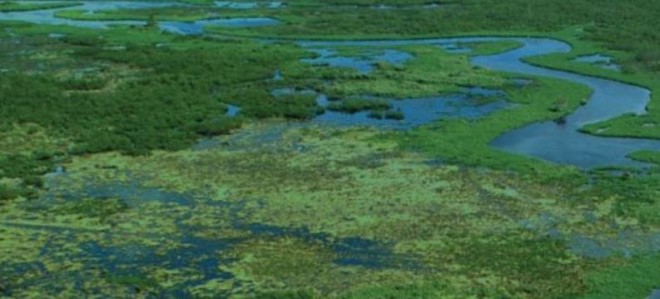Water, water, everywhere and no place for it to go. When will the water level in the St. Johns River return to normal?
That seems to be a recurring question that I am getting more and more frequently. Normal is relative, and the recent higher water levels may be the new normal.
Water levels in the river and ocean change constantly due primarily to tides and rainfall. We seem to accept the impact of a hurricane like Irma that deposited a mind-boggling amount of water on the state. But tides and sea-level rise are another matter.
Tides are a regular feature and predictable, however, they are dictated by the very complex relationship of the sun, moon and earth, which can be confusing.
As the earth rotates on its axis with a 24-hour cycle relative to the sun, the moon is rotating around the earth on its own 29.5-day cycle. And to make it even more complex, the earth and moon are circling the sun on a 365.25-day cycle. We play catch-up with the solar cycle with an extra day every fourth year, or Leap Year.
Tides are caused by the gravitational pull of both the sun and moon on the earth’s surface water.
When the sun, earth and moon are aligned, we get the highest high tides and, conversely, the lowest low tides. Every lunar month we get two sets of high high tides during the full and new moon and two sets of low high tides during the first quarter and third quarter
We call these high high tides, spring tides. The name has nothing to do with the season but comes from a German word meaning to “jump up.” Similarly, the low high tides when the moon is at a 90-degree angle to the earth and sun are called neap tides.
Remember that everything must be somewhere, so if we have high tides on one side of the earth, we have low tides at about a 90-degree angle to the alignment of the earth, moon and sun.
To continue the complex relationship of earth, moon and sun, the orbits are not equal but elliptical. When the moon is closest to the earth, we get even higher tides. When the earth is closest to the sun, we get higher tides. And they are additive, thus when the earth, moon and sun are the closest, we get the highest tides. The term King Tide has come into recent usage to define these highest of high spring tides. It is not a scientific term but useful to differentiate these highest tides.
To compound the problem, sea level is rising due to climate change. The data indicates that human activity is contributing to the warming of the earth. Regretfully, the rate of change is increasing faster than scientists had predicted. So, what is the new normal today will need to be redefined in the not-too-distant future as water levels continue to rise.
Glad you asked River Life
Where do you think marine science is headed in the future?
Many of us wish we had a crystal ball so we could see the future, but fortunately we do not. I am thankful I don’t know exactly what is going to happen in the future. We are like rowers; we move forward by looking backwards. And when I look back to where we started at the beginning of my career, and the tremendous strides we have made with technology and instrumentation, it is truly amazing. I remain optimistic that we will continue to learn, understand and overcome many of the complex environmental issues that we have created for future generations because we did not understand the harm we were doing at the time.

River Life runs the first Tuesday of each month in The Florida Times-Union. Email Quinton White, executive director of Jacksonville University’s Marine Science Research Institute, with questions about our waterways at qwhite@ju.edu. For more on the MSRI, visit ju.edu/msri.
 Wave Magazine Online Jacksonville University News Hub
Wave Magazine Online Jacksonville University News Hub
